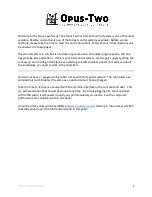
10
4 Mounting
VEGAVIB 63 • NAMUR
31217-EN-170315
4 Mounting
4.1 General instructions
Make sure that all parts of the instrument coming in direct contact
with the process, especially the sensor element, process seal and
process fitting, are suitable for the existing process conditions, such
as process pressure, process temperature as well as the chemical
properties of the medium.
You can find the specifications in chapter "
Technical data
" and on the
nameplate.
In general, VEGAVIB 63 can be installed in any position. The instru-
ment only has to be mounted in such a way that the vibrating element
is at the height of the desired switching point.
Use the recommended cables (see chapter "
Connecting to power
supply
") and tighten the cable gland.
You can give your instrument additional protection against moisture
penetration by leading the connection cable downward in front of the
cable entry. Rain and condensation water can thus drain off. This ap-
plies mainly to outdoor mounting as well as installation in areas where
high humidity is expected (e.g. through cleaning processes) or on
cooled or heated vessels.
Fig. 2: Measures against moisture ingress
Do not hold VEGAVIB 63 on the vibrating element. Especially with
flange and tube versions, the sensor can be damaged by the weight
of the instrument.
Remove the protective cover just before mounting
The process fitting must be sealed if there is gauge or low pressure in
the vessel. Before use, check if the seal material is resistant against
the measured product and the process temperature.
The max. permissible pressure is specified in chapter "
Technical
data
" or on the type label of the sensor.
The vibrating level switch is a measuring instrument and must be
treated accordingly. Bending the vibrating element will destroy the
instrument.
Suitability for the process
conditions
Switching point
Moisture
Transport
Pressure/Vacuum
Handling











































